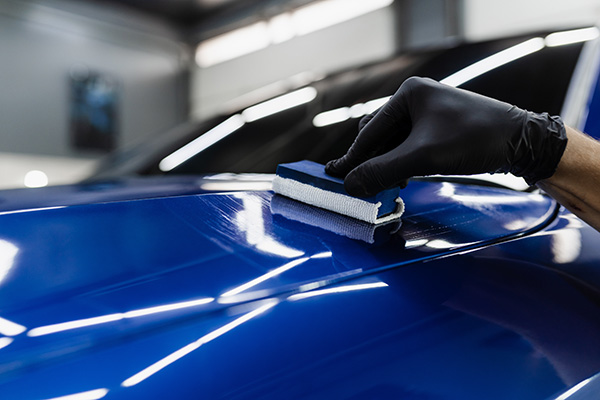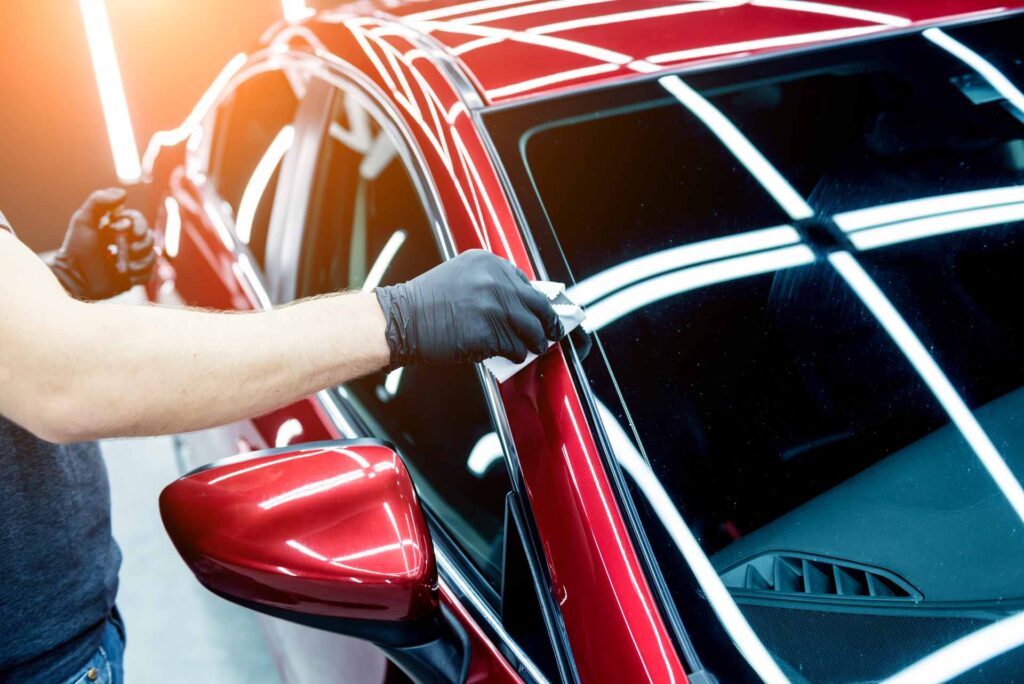Checking Out the Durable Defense of Ceramic Coating for Your Vehicle
Checking Out the Durable Defense of Ceramic Coating for Your Vehicle
Blog Article
The Relevance of Ceramic Coating: Protecting Your Cars and truck's Outside With Precision
In an age where preserving the practical and visual honesty of your lorry is paramount, ceramic covering arises as a critical remedy. With its unique bonding residential or commercial properties, ceramic finishing provides a degree of protection that far exceeds standard waxing methods.
Advantages of Ceramic Coating
When it pertains to preserving an auto's visual allure, ceramic covering provides significant advantages. This sophisticated protective layer supplies a long lasting guard versus environmental pollutants, consisting of dirt, gunk, and dangerous UV rays. By creating a semi-permanent bond with the automobile's paint, ceramic coatings efficiently prevent oxidation and fading, making sure that the auto preserves a glossy, showroom-like finish for a prolonged period. This not only boosts the lorry's aesthetic charm however likewise adds to its lasting worth.
Along with its protective qualities, ceramic layer uses impressive hydrophobic residential properties, triggering water and various other fluids to bead off easily. This feature streamlines the cleaning procedure, as dust and debris are less most likely to comply with the surface, lowering the frequency and effort required for upkeep. The layer's resistance to chemical spots from acidic impurities like bird droppings and tree sap is another significant advantage, decreasing potential paint damages.
Ceramic coverings additionally boost scrape resistance, providing a layer that can absorb small abrasions and swirl marks. This feature is specifically valuable in maintaining a beautiful surface, lowering the probability of visible flaws and preserving the stability of the vehicle's paintwork in time.

Exactly How Ceramic Finish Works
Recognizing the technicians behind ceramic layer reveals its efficiency as a safety remedy for cars. Ceramic finishes are essentially liquid polymer applications that chemically bond with a vehicle's factory paint, creating a protective layer. This layer acts as an obstacle versus ecological contaminants such as ultraviolet, dirt, and grime rays, which can deteriorate a vehicle's outside with time. The essential element in ceramic finishing is silicon dioxide (SiO2), which originates from quartz crystals and is understood for its exceptional solidity and sturdiness.
Application of ceramic covering involves a precise procedure. This guard improves the cars and truck's gloss and hydrophobic residential properties, facilitating less complicated cleaning by causing water and contaminants to bead and slide off effortlessly.
Moreover, the layer's molecular structure offers resistance to minor scratches and chemical spots. Unlike waxes or sealers that rest on top of the paint, ceramic finishes incorporate with the surface area, using long-lasting defense. This combination is basic to its effectiveness, making certain the automobile's surface remains beautiful for years.
Contrasting Ceramic Coating to Alternatives
In the world of vehicle defense, ceramic finishing stands as a powerful option when compared to conventional alternatives such as sealants and waxes. While waxes offer a momentary glossy surface, usually lasting just a few weeks to months, ceramic layers give a longer-lasting option, frequently enduring for many years. This longevity is connected to the chemical bonding that occurs when ceramic layers are applied, creating a solid layer that is immune to ecological dangers.
Contrastingly, sealants, although even more durable than waxes, still drop brief of the robust defense offered by ceramic finishings. Sealants can typically last for as much as a year, offering an artificial guard against particular elements. They lack the exceptional hydrophobic properties and UV security that ceramic finishes provide.
Furthermore, ceramic layers supply boosted scratch resistance, which neither waxes nor sealers can efficiently match. In summary, while traditional waxes and sealants supply fundamental security, ceramic layers provide a comprehensive, long-term service that substantially enhances and protects the vehicle's exterior coating.
Application Refine Discussed
Using ceramic finish to a vehicle needs a careful process to make certain ideal results and longevity. Once cleaned, the automobile is dried and brightened to get rid of any type of flaws, as any type of existing scrapes or swirls can end up being a lot more obvious after the layer is used.
Following surface area prep work, the application of the ceramic finishing begins. The finishing is typically applied in a climate-controlled setting to avoid dust particles from deciding on the newly cleansed surface. Utilizing an applicator pad, the ceramic covering is applied in tiny sections to guarantee even protection. It is necessary to comply with the manufacturer's guidelines concerning the suitable healing time and application density.
After application, the finish needs a specific treating period, throughout which the vehicle must be shielded from water and contaminants. This curing procedure can differ depending upon the product but generally varies from 24 to 2 days. Ultimately, this in-depth process is crucial in attaining a resilient and shiny coating.
Upkeep Tips for Durability
To maintain the durability of a ceramic layer, adherence to a regimented upkeep regimen is essential. Regular washing is paramount; make use of a pH-neutral vehicle hair shampoo and soft microfiber mitts to prevent abrasions. Stay clear of automated automobile washes, as their harsh brushes can compromise the covering's honesty. Rather, choose for a hand clean to make certain extensive yet gentle cleansing.
Post-wash, drying the automobile with a clean microfiber towel prevents water areas that may break down the coating over time. In addition, use a ceramic finishing booster every couple of months. These boosters enhance the hydrophobic residential properties and improve the layer's safety capacities, click for more info guaranteeing it remains efficient against pollutants.
Bear in mind that parking locations play an essential duty in maintenance. ceramic coating. Whenever possible, park in shaded areas to minimize UV direct exposure, which can gradually weaken the covering. For long-lasting storage space, think about making use of a cars and truck cover for added defense versus ecological components
Final Thought
To conclude, ceramic finishing works as an essential safety layer for automobile exteriors, supplying resilient defense against ecological aspects such as dust, grime, and UV rays. By forming a semi-permanent bond with check out this site the paint, it improves visual appeal while maintaining the vehicle's worth. Its hydrophobic residential properties assist in simpler maintenance, differentiating it from alternative protective approaches. Comprehending the application procedure and sticking to upkeep referrals are vital for making best use of the longevity and efficiency of ceramic covering.
When it comes to preserving a vehicle's visual appeal, ceramic covering provides considerable benefits. By creating a semi-permanent bond with the lorry's paint, ceramic finishings effectively protect against oxidation and fading, guaranteeing that the car keeps a shiny, showroom-like coating for a prolonged duration. Ceramic finishes are basically fluid polymer applications that chemically bond with a vehicle's factory paint, producing a safety layer. In summary, while conventional waxes and sealants use basic defense, ceramic finishes provide a comprehensive, lasting option that dramatically maintains the lorry and boosts's outside coating.

Report this page